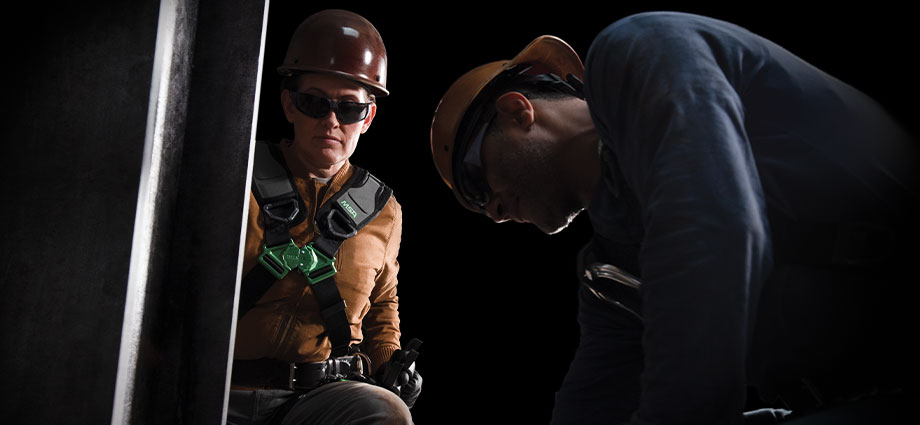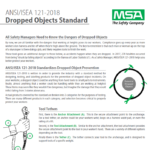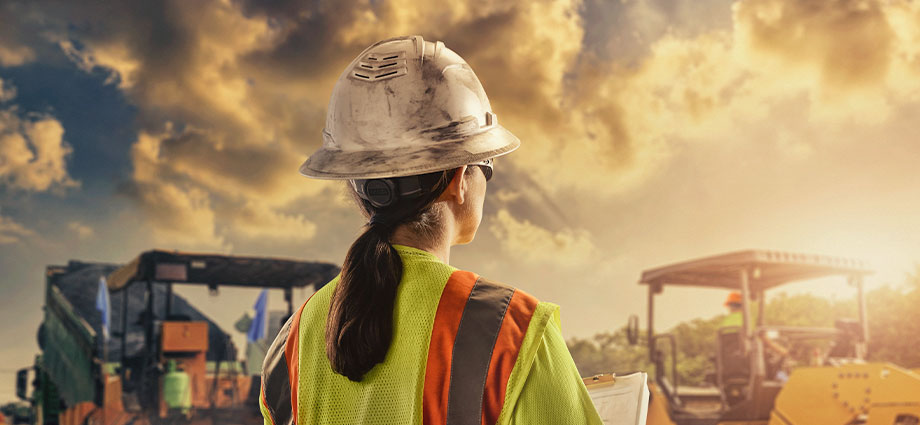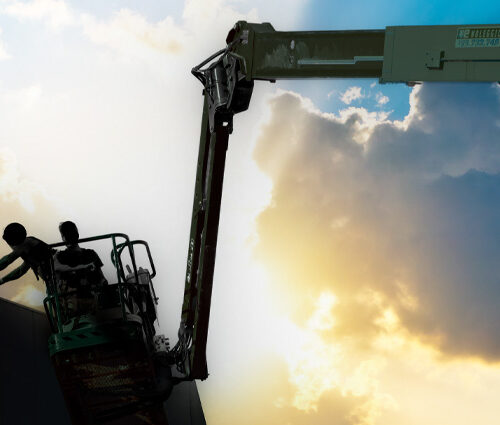
Any time you work at height, dropped objects are possible. And they can pose a real danger to other workers or bystanders on the ground. Even small, seemingly innocent tools and materials are hazardous when dropped from above.
Dropped objects pose numerous hazards, including death. The Bureau of Labor Statistics categorized 227 fatalities in 2021 as resulting from being “struck by falling objects.” The Occupational Safety and Health Administration (OSHA) includes “struck by object” among its “Fatal Four,” the top causes of more than half of construction worker deaths. Dropped objects can also cause structural, environmental, and equipment-related damage.

Download the whitepaper to share with your team!
Why You Should Care About ANSI/ISEA 121-2018
Until the creation of The International Safety Equipment Association (ISEA) and American National Standards Institute (ANSI) 121-2018, American National Standard for Dropped Object Prevention Solutions, in the summer of 2018, there were no formal rulings pertaining to dropped objects. And many workers got…creative…finding their own solutions for holding on to their tools. Duct tape has historically been a popular choice, for instance. Anyone down below had to hope these haphazard contraptions held and rely on their own hardhats or netting, toe boards, and other passive equipment to protect them should anything fall.
The goal of this recent standard is to prevent falling objects in the first place rather than just protecting people on the ground from the objects.
ANSI/ISEA 121-2018 helps protect workers from dropped objects. The standard offers guidance toward safer practices for designing, testing, and labeling products that help prevent dropped object incidents.
What’s Covered?
When a system is ANSI/ISEA 121-2018 compliant, workers can be more confident that it will prevent dropped object incidents. The standard addresses active but not passive controls and divides the numerous products the standard covers into two categories: tool tethers and containers.
Tool Tethers
These consist of three main parts. The anchor attachment is the point of secure attachment to the anchorage, which could be a worker’s wrist, harness waist pad loops, or a lift’s railing. Like the anchor attachment, the second component, the tool attachment, is where the tool in a worker’s hand is securely attached. The tether is the final component and connects the tool to the anchorage while supporting the tool’s specific weight.
Containers
For smaller objects, like nuts and bolts, that can’t be tethered like tools, containers are needed. The standard addresses two main types of containers. Small bags attach to a tool belt or waist pad, and larger bags attach to scaffolding, lifts, or another stationary anchor after being hoisted up to the work area.
Choose the Right Equipment
Now that you know what products ANSI/ISEA 121-2018 covers, it’s time to choose the right equipment for the job. Download the white paper below to learn more about ANSI/ISEA 121-2018 standardizing dropped object prevention and the three questions you should be asking to determine the correct equipment.







